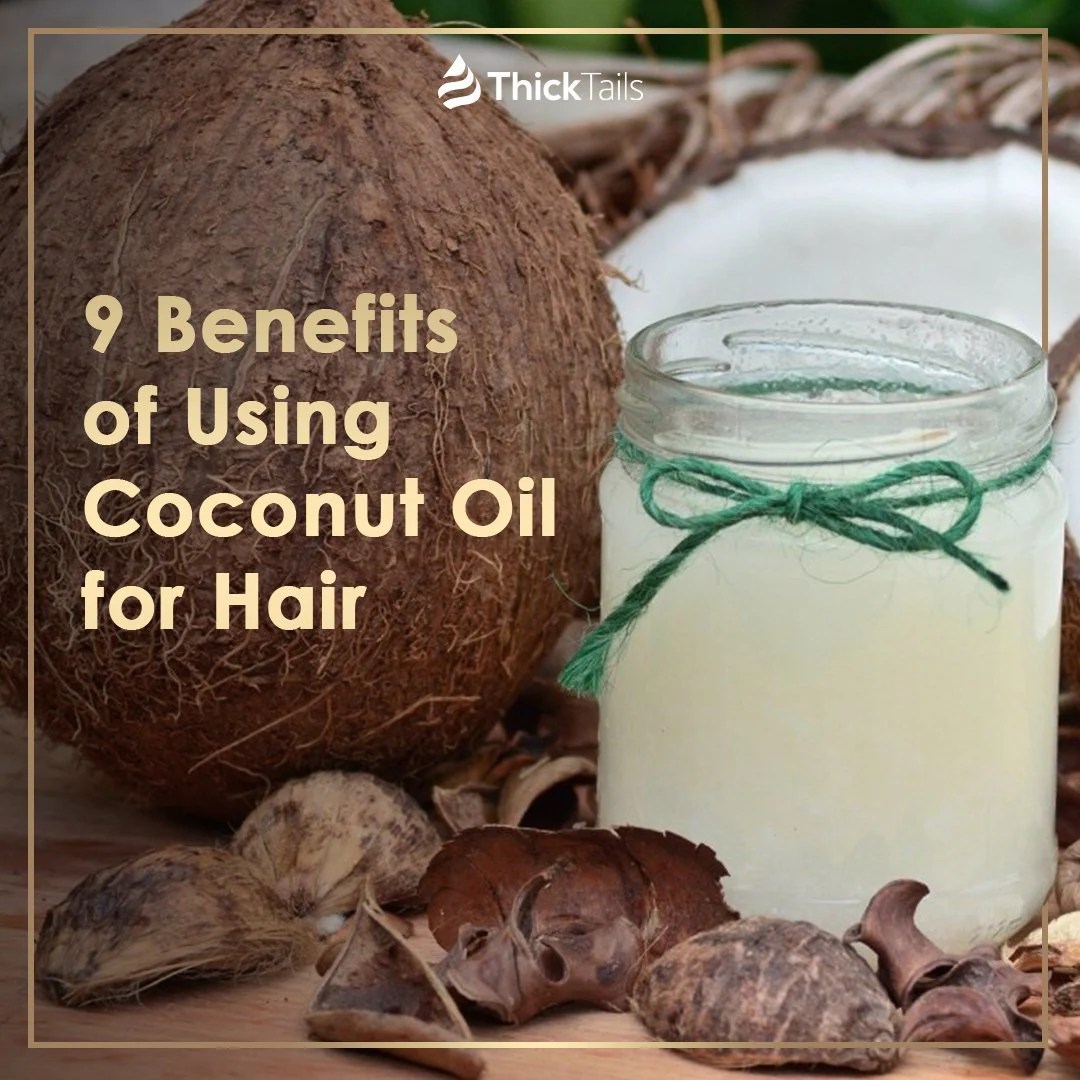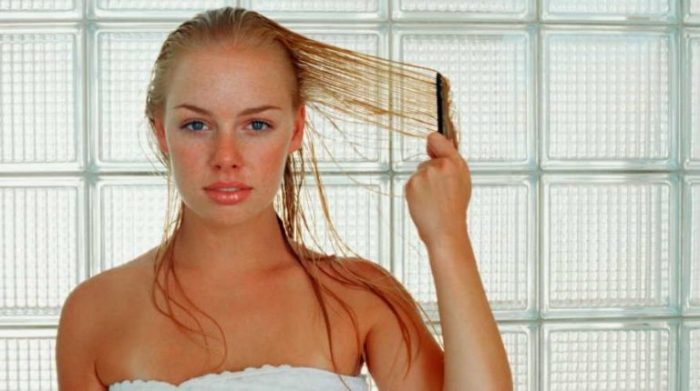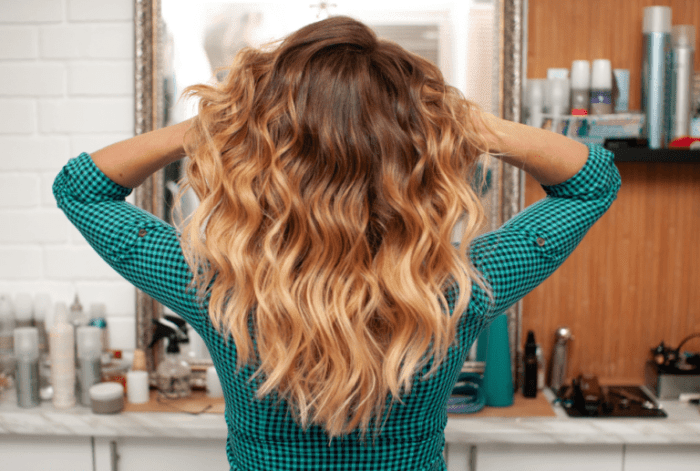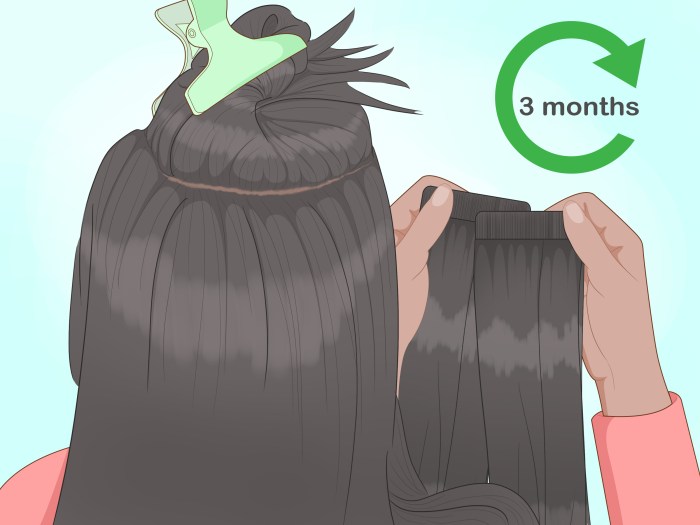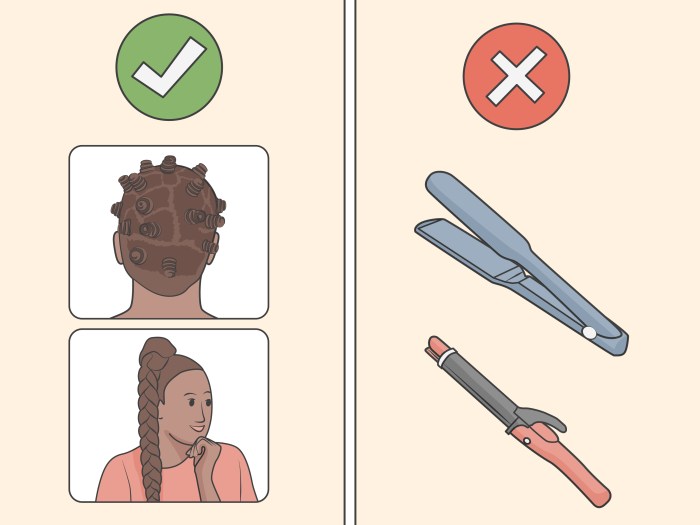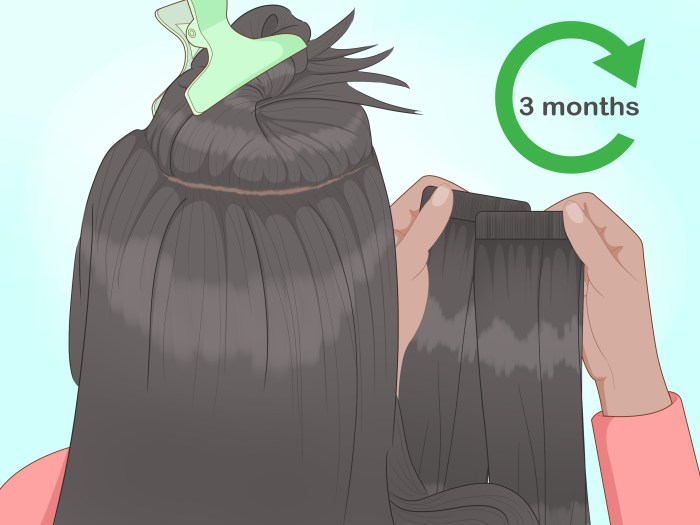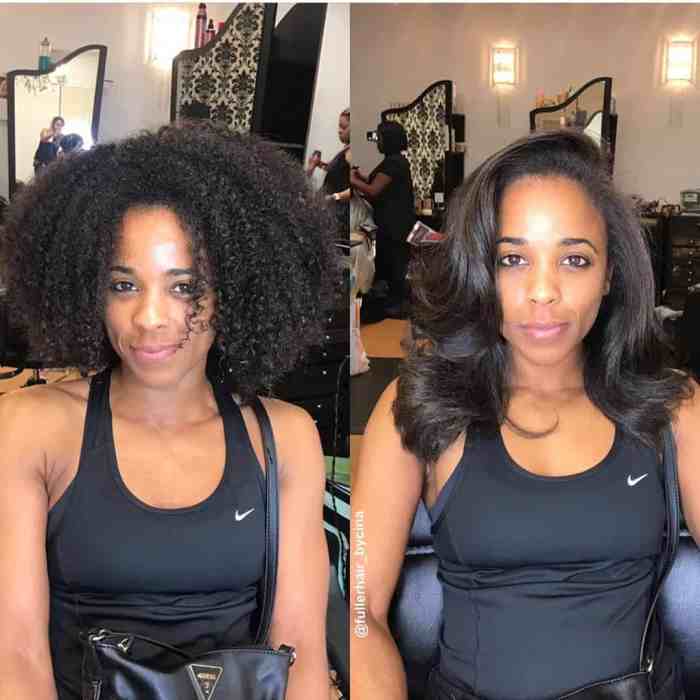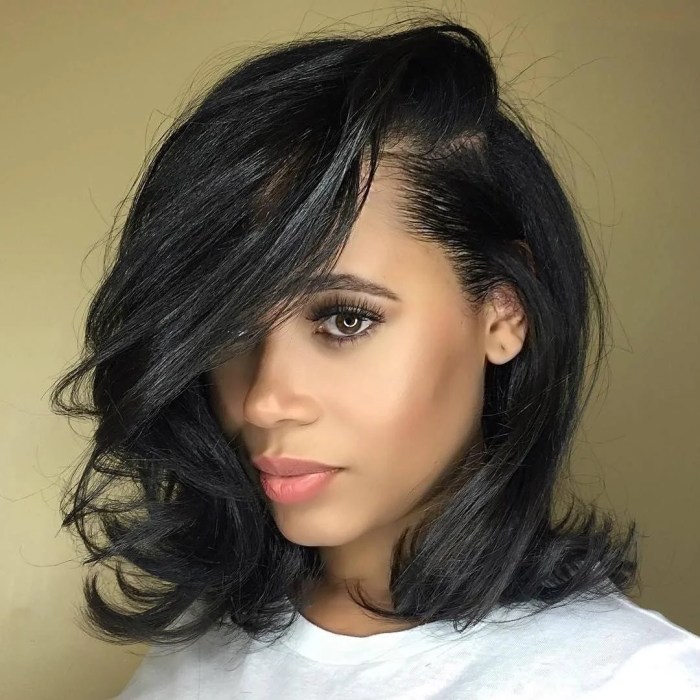Use Coconut Oil for Your Hair, a natural remedy for luscious locks. This comprehensive guide explores the diverse benefits of coconut oil for hair health, from moisturizing and strengthening to potential growth stimulation. We’ll delve into different coconut oil types, application methods, and even share DIY recipes for customized hair treatments. Ready to unlock the secrets to healthier, shinier hair?
Coconut oil, a versatile ingredient with a rich history in various cultures, has found a renewed appreciation in modern hair care. Its unique fatty acid profile makes it a potent moisturizing agent, potentially improving hair texture and reducing damage. This post delves into the science behind coconut oil’s effectiveness, comparing it to other natural oils and exploring the nuances of various application methods.
Discover how to leverage this natural treasure to achieve your hair goals.
Introduction to Coconut Oil for Hair
Coconut oil has become a popular natural remedy for hair care, often touted for its moisturizing and nourishing properties. Its use in hair treatments stems from its rich composition, which includes fatty acids, vitamins, and antioxidants. Many people swear by its ability to improve hair texture, reduce breakage, and promote overall health. This exploration delves into the science behind coconut oil’s effectiveness, examining its chemical makeup, historical applications, and the variations within coconut oil types.Coconut oil’s effectiveness on hair stems from its rich chemical composition.
It’s primarily comprised of saturated fatty acids, particularly lauric acid, a medium-chain triglyceride (MCT). These fatty acids penetrate the hair shaft, providing moisture and strengthening the hair structure. Lauric acid, in particular, is known for its antimicrobial properties, which may help prevent dandruff and scalp irritation. Additionally, coconut oil contains vitamins and antioxidants, further contributing to overall hair health.
Chemical Composition and Potential Benefits
The primary component of coconut oil, lauric acid, is a medium-chain triglyceride (MCT) that is easily absorbed by the hair shaft. This absorption leads to improved moisture retention, potentially reducing dryness and promoting a healthier hair appearance. Its antimicrobial properties are believed to reduce scalp infections and related issues like dandruff. Further, the vitamins and antioxidants present in coconut oil may contribute to overall hair health by supporting hair follicle growth and reducing damage.
Historical and Traditional Uses
Coconut oil has a long history of use in various cultures for hair care. In traditional Asian and Polynesian practices, it was often incorporated into hair masks and treatments. These practices recognized coconut oil’s ability to condition and moisturize hair, leading to healthier and more manageable hair. These traditional methods, passed down through generations, highlight the enduring belief in coconut oil’s benefits for hair.
Different Types of Coconut Oil
Several types of coconut oil are available, each with slight variations in their properties. The differences arise primarily from processing methods, impacting the oil’s purity, color, and aroma. These differences can affect the oil’s efficacy, although generally, all types of coconut oil can benefit hair.
Coconut oil is amazing for hair health, right? But, hey, sometimes even the best beauty tips can’t fix everything. Like, after watching the latest Atlanta recap, the reactions on social media about how some people are going broke trying to keep up with the drama, atlanta recap reaction go broke really hit home. Regardless, coconut oil is still a great natural hair treatment, perfect for moisturizing and preventing dryness.
Comparison of Coconut Oil Types
| Coconut Oil Type | Description | Potential Benefits | Potential Drawbacks |
|---|---|---|---|
| Virgin Coconut Oil | Cold-pressed, unrefined oil, retaining natural components. | Rich in vitamins, antioxidants, and natural compounds; may have a more potent effect on hair health due to higher nutrient content. | Potential for a stronger odor; may have a slightly higher price point. |
| Refined Coconut Oil | Processed to remove impurities and color; resulting in a clear, odorless oil. | Generally milder on the scalp; less likely to cause allergic reactions. | Potential loss of some vitamins and antioxidants compared to virgin oil; may have less impact on hair health overall. |
| Fractionated Coconut Oil | Processed to separate different fatty acid components. | May be more suitable for specific hair needs, such as moisturizing or styling; often used in hair products. | May not offer the same comprehensive benefits as virgin or refined oils; potentially less effective in overall hair health. |
Note: The effectiveness of any coconut oil type will depend on individual hair type and specific needs. Results may vary.
Benefits of Using Coconut Oil for Hair: Use Coconut Oil For Your Hair
Coconut oil, a versatile natural ingredient, has gained popularity for its potential benefits in hair care. Its unique fatty acid profile and moisturizing properties have led to claims of improved hair health and appearance. Let’s delve into the purported benefits and examine the evidence behind them.
Moisturizing and Conditioning Properties
Coconut oil’s rich fatty acid composition, particularly lauric acid, makes it an effective moisturizer for hair. These fatty acids penetrate the hair shaft, replenishing lost moisture and sealing in existing moisture. This process can lead to improved manageability and a healthier, more hydrated look. The hydrophobic nature of coconut oil helps to create a protective barrier on the hair, preventing moisture loss and reducing dryness.
Strengthening and Repairing Hair
Coconut oil’s nourishing properties can potentially strengthen hair, promoting a healthier structure. The presence of vitamins and antioxidants may contribute to improved hair elasticity and resilience. This can lead to a reduction in hair breakage and split ends. By penetrating the hair shaft, coconut oil can potentially help repair damaged areas, restoring a stronger and healthier hair structure.
Potential Effects on Hair Growth
While anecdotal evidence suggests coconut oil can stimulate hair growth, rigorous scientific research in this area is limited. Some suggest that the improved moisture and nourishment provided by coconut oil can contribute to a healthier hair follicle environment, indirectly supporting growth. However, the effect of coconut oil on hair growth is not yet conclusively proven.
Comparison to Other Natural Oils
Coconut oil’s effectiveness in hair care is often compared to other natural oils like argan oil, jojoba oil, and olive oil. Each oil has a unique composition of fatty acids and potential benefits. Argan oil, rich in vitamin E, is known for its moisturizing and antioxidant properties. Jojoba oil, with its similar composition to sebum, may be beneficial for those with oily hair.
Olive oil is also moisturizing but may not be as effective for strengthening hair as coconut oil. The best oil for an individual will depend on their hair type and specific needs.
Evidence-Based Research
Although numerous anecdotal accounts exist, scientific research on the effects of coconut oil on hair growth is not extensive. While there are studies on the potential benefits of coconut oil for skin health, more research is needed to confirm its efficacy in hair care. Limited research suggests that coconut oil’s moisturizing properties might improve hair health, but conclusive evidence on hair growth is lacking.
Potential Benefits and Drawbacks
| Benefit | Description | Supporting Evidence (optional) |
|---|---|---|
| Moisturizing | Coconut oil’s fatty acids hydrate and condition hair, improving manageability and reducing dryness. | Anecdotal evidence and general knowledge of fatty acid effects on skin/hair. |
| Strengthening | Coconut oil potentially strengthens hair structure, reducing breakage and split ends. | Limited scientific evidence on hair strengthening, more research needed. |
| Conditioning | Coconut oil’s moisturizing properties can improve hair’s overall health and appearance. | Limited scientific evidence, more research needed. |
| Potential Hair Growth | Anecdotal evidence suggests coconut oil can stimulate hair growth, but more research is required. | Limited research; more research needed. |
| Drawback (Potential) | Some individuals may experience hair greasiness or buildup with excessive use. | Anecdotal evidence and user reports. |
Methods of Applying Coconut Oil to Hair
Coconut oil’s versatility extends beyond moisturizing; its application methods cater to various hair types and concerns. Understanding these methods is crucial for maximizing its benefits and achieving desired results. From pre-shampoo treatments to overnight masks, we’ll explore the best practices for incorporating coconut oil into your hair care routine.Applying coconut oil correctly is key to experiencing its moisturizing and nourishing properties.
The method you choose depends heavily on your hair type and the specific issue you’re addressing. Whether your hair is dry, oily, or damaged, tailoring the application process is vital for optimal results.
Pre-Shampoo Treatments
Pre-shampoo treatments allow coconut oil to deeply penetrate the hair shaft before cleansing. This is particularly beneficial for dry, damaged, or brittle hair, as it helps to hydrate and strengthen the strands. A pre-shampoo treatment acts as a conditioning step, providing moisture and improving manageability.
- Warm the oil: Gently warm a small amount of coconut oil in your hands to make it easier to apply and absorb. This also enhances the penetration process, allowing the oil to reach the hair shaft more effectively.
- Even application: Distribute the oil evenly throughout your hair, ensuring all sections are coated, especially the ends, which are often the driest.
- Cover and seal: Cover your hair with a shower cap or a warm towel to help trap heat and encourage absorption. This step is crucial for deeper penetration.
- Time and Patience: Leave the oil in for at least 30 minutes, or preferably overnight, for maximum benefits. The longer it stays, the better the results.
- Shampoo and Condition: Shampoo and condition your hair as usual after the treatment. The oil will have already prepped the hair for cleansing and conditioning.
Overnight Treatments
Overnight treatments are ideal for intensive hydration and deep conditioning. This method is particularly effective for dry, brittle, or damaged hair.
- Oil Selection: Choose a high-quality virgin coconut oil for the best results. Ensure the oil is at room temperature, not too hot or too cold.
- Application: Apply a generous amount of oil to your hair, starting from the ends and working your way up to the roots. Focus on areas that need the most hydration.
- Protection: Protect your pillowcase with a silk or satin scarf or pillowcase to avoid oil transfer and friction against the pillow.
- Morning Routine: Wash your hair as usual in the morning. This will remove excess oil and leave your hair moisturized and manageable.
Deep Conditioning Masks
Deep conditioning masks offer an intensive treatment for hair that needs intense hydration and repair. This is an excellent option for all hair types, particularly for those dealing with dryness, damage, or split ends.
- Choose Your Ingredients: Mix coconut oil with other natural ingredients to create a custom mask. For instance, a mask with honey and eggs is known for its moisturizing properties. Some examples include avocado, yogurt, or honey.
- Apply Carefully: Apply the mask evenly to your hair, concentrating on the areas that require the most moisture.
- Cover and Relax: Cover your hair with a shower cap and let the mask sit for at least 15-30 minutes, or longer for more intense conditioning.
- Rinse Thoroughly: Rinse the mask out completely with warm water, followed by a gentle shampoo and conditioner.
Tailoring Application Methods
The optimal method for applying coconut oil depends on your hair type and condition. For example, oily hair might benefit more from a pre-shampoo treatment to moisturize without adding excess oil. Dry or damaged hair might respond better to overnight treatments or deep conditioning masks for intensive hydration.
Amounts of Coconut Oil
The amount of coconut oil you need depends on your hair length and type. For short hair, a small amount is sufficient. For long hair, a larger quantity may be necessary.
Table of Coconut Oil Application Methods
Potential Drawbacks and Considerations
While coconut oil offers numerous benefits for hair, it’s crucial to understand its potential drawbacks and limitations. Not everyone experiences the same results, and certain individuals might find that coconut oil isn’t the ideal choice for their hair type or condition. Careful consideration of these factors can help ensure a positive and effective hair care routine.
Potential Side Effects
Coconut oil, while generally safe, can sometimes cause side effects. One common concern is greasiness. Individuals with oily hair types may find that coconut oil exacerbates this issue, leading to a buildup of oil on the scalp and strands. This can result in a greasy or limp appearance, and may even contribute to product buildup over time.
Using coconut oil for your hair is a great way to nourish and condition it. While I’m diving deep into the benefits of coconut oil for hair health, I also wanted to share that Crystal Castles just dropped a new track called “Fleece” – you HAVE to check it out! crystal castles share new song fleece listen.
The rich moisturizing properties of coconut oil make it a fantastic choice for repairing damage and promoting healthy growth. It’s a simple, natural solution for beautiful hair.
Another potential side effect is an allergic reaction. While rare, some people may develop a skin rash or irritation when using coconut oil. This could manifest as redness, itching, or swelling. If you experience any allergic reactions, discontinue use immediately and consult a dermatologist.
Unsuitable Hair Types and Conditions
Certain hair types and conditions may not respond favorably to coconut oil treatments. For instance, individuals with extremely fine or oily hair may find that coconut oil weighs down their strands, making them appear limp and greasy. Similarly, those with scalp conditions like dandruff or seborrheic dermatitis might experience worsening symptoms if coconut oil is applied directly to the scalp.
Careful consideration of your hair type and any existing scalp issues is important before incorporating coconut oil into your routine.
Avoiding Common Mistakes
To maximize the benefits of coconut oil and minimize potential drawbacks, avoid these common mistakes:
- Applying too much coconut oil:
- Applying coconut oil to the scalp only:
- Forgetting to wash out the oil:
Using an excessive amount of coconut oil can lead to greasiness and buildup. Start with a small amount and adjust as needed. A pea-sized amount is often sufficient for most applications.
Using coconut oil for hair health is a fantastic idea, and I’ve been loving the results. While I’m digging into the benefits of this oil, I also can’t help but be excited about Toto’s recent cover of Weezer’s “Hash Pipe.” You can check out the awesome new version here: toto release cover of weezers hash pipe listen.
The smooth, rich texture of the coconut oil makes it perfect for nourishing my hair, and I’m hoping it continues to work wonders. Overall, it’s been a great experience.
While scalp application can be beneficial, applying coconut oil to the hair shaft also plays a crucial role. A comprehensive application to both the scalp and hair shaft can help moisturize and nourish the entire hair shaft, leading to improved overall hair health.
For some individuals, overnight applications may be beneficial. However, for those with oily hair, it’s essential to wash out the oil thoroughly after a period of use to prevent excessive buildup.
Addressing Potential Issues
If you encounter greasiness or allergic reactions, these strategies can help mitigate the problem:
- Reducing the amount of coconut oil used:
- Washing hair more frequently:
- Using a clarifying shampoo:
- Patch testing before full application:
If greasiness is a concern, start with a smaller quantity of coconut oil and gradually increase as needed. Adjusting the application frequency can also be helpful.
If greasiness persists, consider increasing the frequency of your hair washings to remove the excess oil.
A clarifying shampoo can help remove product buildup, including excess coconut oil, from the hair and scalp.
For individuals concerned about potential allergic reactions, perform a patch test on a small area of skin before applying coconut oil to the entire scalp or hair. This allows for an assessment of individual tolerance levels.
Potential Risks and Precautions, Use Coconut Oil for Your Hair
Recipes and DIY Hair Treatments
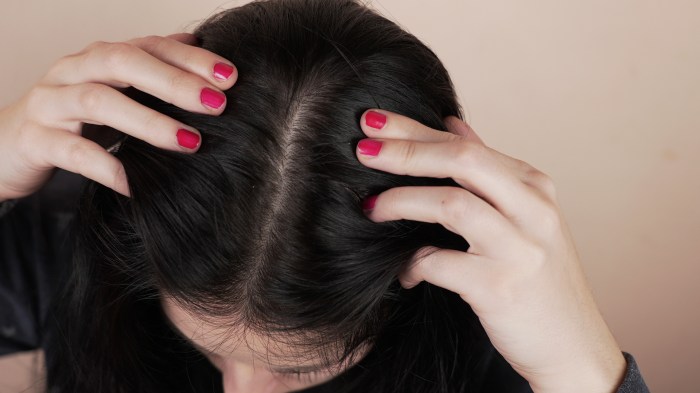
Coconut oil’s versatility extends beyond simple application. Transforming it into homemade hair masks and treatments allows you to tailor the ingredients to your specific hair needs, creating a personalized approach to hair care. These DIY recipes offer a cost-effective and often more potent solution than store-bought products.By understanding the different components of these recipes and the effects of various ingredients, you can create a regimen that addresses your unique hair concerns, whether it’s dryness, damage, or scalp issues.
These personalized treatments can lead to noticeable improvements in hair health and appearance.
Coconut Oil Hair Mask
This mask deeply moisturizes and nourishes dry, damaged hair, leaving it feeling softer and more manageable.
Recipe 1: Coconut Oil Hair MaskIngredients:
- 1/4 cup coconut oil
- 1 tablespoon honey
- 1 egg yolk
- 1 teaspoon olive oil (optional, for extra moisture)
Instructions:
- In a small bowl, combine the coconut oil, honey, egg yolk, and olive oil (if using). Mix well until smooth.
- Apply the mixture evenly to your hair, focusing on the ends and mid-lengths. Avoid applying directly to the scalp if you have oily hair or scalp conditions.
- Cover your hair with a shower cap or plastic wrap and a towel to trap heat. Leave on for at least 30 minutes, or up to an hour.
- Rinse thoroughly with lukewarm water and shampoo as usual. Repeat once a week for best results.
Coconut Oil and Yogurt Hair Treatment
This treatment is excellent for those seeking to add shine and volume to their hair.
Recipe 2: Coconut Oil and Yogurt Hair TreatmentIngredients:
- 1/4 cup coconut oil
- 1/4 cup plain yogurt (Greek yogurt is recommended)
- 1 teaspoon lemon juice (optional, for shine)
Instructions:
- Combine the coconut oil, yogurt, and lemon juice (if using) in a small bowl.
- Apply the mixture to your hair, ensuring even distribution from roots to tips.
- Cover your hair as described in the previous recipe and leave on for 45 minutes to an hour.
- Rinse thoroughly with lukewarm water and shampoo.
- For best results, repeat this treatment once or twice a week.
Storing Homemade Treatments
Proper storage is crucial for maintaining the quality and effectiveness of your homemade treatments.
- Store leftover mixtures in an airtight container in the refrigerator. This will help to maintain the integrity of the ingredients and prevent spoilage. The cold will also help thicken the mixtures.
- For mixtures containing eggs, be cautious about how long you can store them, as the egg proteins can start to break down more rapidly.
- Always check the date of your ingredients and make sure that the ingredients are fresh.
Comparison with Other Hair Care Products
Coconut oil’s versatility as a hair treatment often leads to comparisons with other popular hair care products like conditioners and shampoos. While coconut oil excels in its ability to deeply moisturize and nourish, understanding its strengths and weaknesses relative to other options is crucial for optimizing hair health. This comparison highlights the unique benefits and potential drawbacks of each product, allowing you to tailor your hair care routine effectively.Coconut oil’s unique composition makes it a potent moisturizing agent, often exceeding the benefits of traditional conditioners.
However, its thick consistency and potential for buildup require careful application and consideration. Shampoos, on the other hand, are designed to cleanse and remove product buildup, but can sometimes strip away natural oils, necessitating a balanced approach to hair care.
Coconut Oil vs. Conditioners
Coconut oil’s moisturizing properties often surpass those of conventional conditioners. It penetrates the hair shaft, providing deep hydration and reducing dryness. Conditioners, while important for detangling and adding shine, typically offer less intense moisture than coconut oil. This difference is particularly noticeable for individuals with severely dry or damaged hair.
- Coconut oil’s superior moisturizing capacity is a key advantage. It can deeply hydrate and restore moisture to even the driest hair, whereas conditioners often rely on humectants to attract moisture.
- Conditioners are typically formulated for easier detangling and smoothing. Coconut oil, while effective, may require additional detangling methods if your hair is excessively knotted.
- Many conditioners contain silicones, which can build up over time, potentially leading to a less healthy scalp. Coconut oil, when used correctly, doesn’t contribute to this issue.
Coconut Oil vs. Shampoos
Shampoos are essential for cleansing the scalp and hair, removing dirt, oil, and product buildup. However, some shampoos can strip away the hair’s natural oils, leading to dryness and damage. Coconut oil, while not a replacement for shampoo, can provide added moisture and nourishment that shampoos might lack.
- Coconut oil can be used as a pre-shampoo treatment to enhance moisture retention. It can also help balance scalp oils, reducing the need for overly harsh shampoos.
- Shampoos formulated with harsh sulfates or detergents can be drying and damaging to the hair and scalp. Coconut oil, naturally, is gentler.
- Coconut oil is not a replacement for shampoo. Shampoos are necessary for removing impurities and buildup. Using coconut oil as a pre-shampoo treatment or in conjunction with a sulfate-free shampoo can optimize moisture retention.
Comparison Table
| Product | Benefit 1 | Benefit 2 | Benefit 3 |
|---|---|---|---|
| Coconut Oil | Deep Moisture | Scalp Nourishment | Natural Hydration |
| Conditioner | Detangling | Shine Enhancement | Temporary Moisture |
| Shampoo | Cleanse | Remove Buildup | Scalp Hygiene |
Maintenance and Follow-up

Maintaining the benefits of coconut oil treatments extends beyond the initial application. Consistent use and a well-rounded hair care routine are key to achieving and sustaining healthy, luscious locks. This section delves into strategies for incorporating coconut oil into your long-term hair care regimen and addressing any potential issues that may arise.Coconut oil’s nourishing properties are most effective when integrated into a holistic approach to hair health.
Understanding how to maintain the results and avoid common pitfalls is crucial for realizing its full potential. This section will guide you through practical methods and recommendations for long-term success.
Long-Term Hair Care Routine Recommendations
A consistent routine incorporating coconut oil can dramatically improve hair health. The key is to find a routine that works for your hair type and lifestyle.
- Regular Application: Fortifying and moisturizing benefits are amplified by regular application. Aim for at least once a week, or more frequently if your hair is dry or damaged. Adjust the frequency based on your hair’s needs and the results you’re seeing.
- Scalp Health: Coconut oil’s nourishing qualities extend to the scalp. Incorporate gentle scalp massages during application to promote blood circulation and stimulate hair follicles. This can be done once a week or even a few times a week, as needed.
- Hydration and Nutrition: Healthy hair begins from within. A balanced diet rich in vitamins, minerals, and protein is essential. Staying hydrated also supports hair health. Drink plenty of water daily.
Combining Coconut Oil with Other Products
Combining coconut oil with other hair care products can enhance its effects. Careful selection and application are crucial for optimal results.
- Conditioners: Use coconut oil as a pre-shampoo treatment, leaving it on for a certain time (15-30 minutes). Then, apply your regular conditioner as usual. This allows the conditioner to penetrate more deeply and moisturize effectively. A good conditioner will enhance the moisturizing benefits of coconut oil.
- Hair Masks: Coconut oil is a fantastic base for DIY hair masks. Combine it with other natural ingredients like honey, avocado, or eggs for a deeper conditioning treatment. This provides additional nutrients and moisture to the hair.
- Heat Styling Protection: When using heat styling tools, apply a light layer of coconut oil before styling. This creates a protective barrier and reduces heat damage. Apply it after shampooing, before styling, for best results.
Addressing Potential Concerns and Issues
While generally safe, some individuals may experience minor issues after using coconut oil.
- Oily Hair: If your hair becomes excessively oily after using coconut oil, reduce the frequency of application or use a smaller amount. This can happen when the oil isn’t absorbed by the hair well, which is often the case when applying large amounts to fine hair types.
- Scalp Irritation: If you experience scalp irritation, discontinue use and consult a dermatologist. This might be a reaction to the oil or an underlying scalp condition. It’s best to avoid the product altogether.
- Hair Loss: If you notice hair loss after using coconut oil, consult a doctor or dermatologist to rule out any underlying medical conditions. Hair loss is not a typical side effect of coconut oil, so a visit to a professional is warranted.
Maintenance Strategies
Maintaining healthy hair involves a proactive approach.
- Regular Cleansing: Regular shampooing is important. However, use a sulfate-free shampoo to minimize stripping the natural oils from the hair and scalp. This can help prevent the buildup of product residue.
- Avoiding Over-Processing: Over-processing, such as excessive heat styling or coloring, can damage hair. Limit these practices for healthy hair. Using coconut oil can protect the hair from damage, but it won’t eliminate the negative effects of over-processing.
- Monitoring Results: Pay close attention to how your hair responds to coconut oil treatments. Adjust your routine based on your individual needs and results. If your hair feels better, keep doing it. If it doesn’t, consider trying a different approach.
Closure
In conclusion, using coconut oil for your hair care routine can be a valuable addition to your existing regimen. This guide has provided a comprehensive overview of its potential benefits, methods of application, and important considerations. Remember to consult with a dermatologist if you have specific concerns or conditions, and always conduct a patch test before applying any new product to your scalp.
Embrace the natural power of coconut oil for healthier, happier hair!
